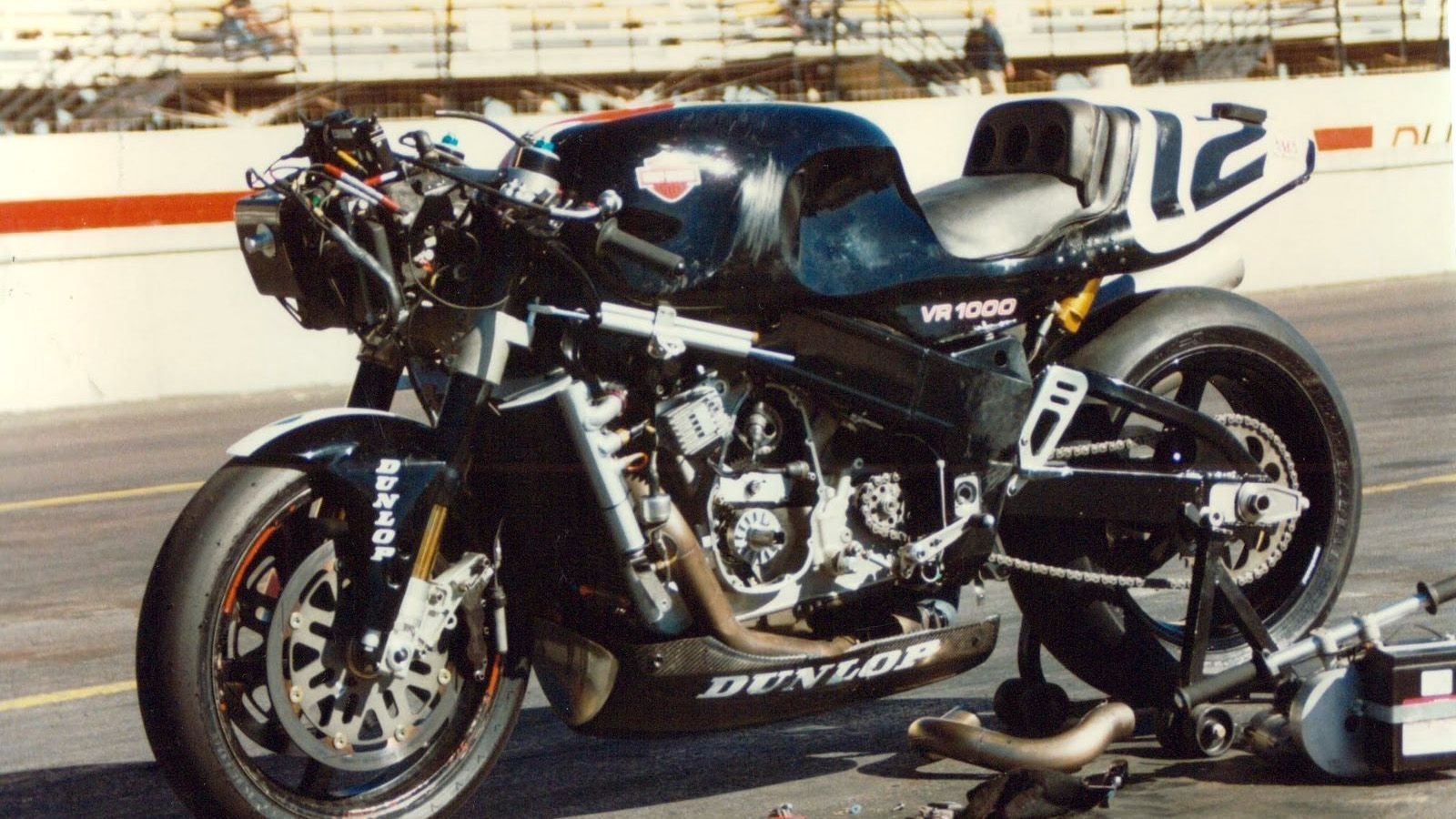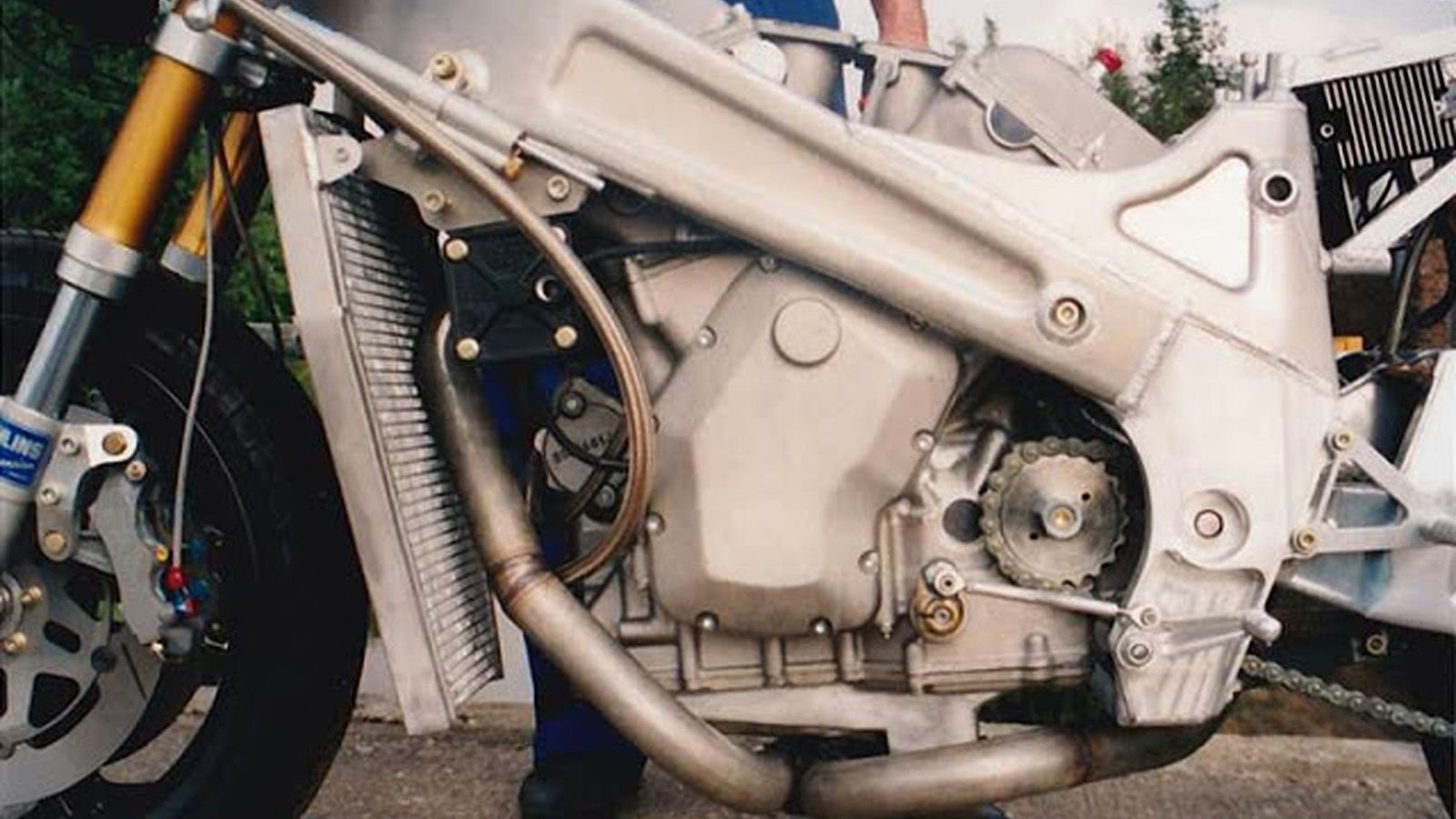Harley-Davidson VR1000 was a Potent Superbike Contender
Daily Slideshow: Outclassed, the VR1000 was an AMA racing underdog that held its own.




















Racing Thoroughbred
The VR1000 was the first pure racing motorcycle Harley-Davidson ever built. Up to 1993, the Motor Company's entire race history had been based on modified production machines. Fueled by the desire to put Harley-Davidson back on the road racing podium, VR1000 development began in 1987. The VR1000 made its first, and ignominious, appearance at the Daytona 200 in 1994.
Photo courtesy of Danny McKenna Garage
Did Not Finish
The VR1000's race baptism ended with a blown engine as a result of a failed weld on the counterbalancer gear, which resulted in a DNF. Mechanical issues aside, the VR1000 had an another, almost crippling flaw, it was short on power. Slated for release in 1990, the VR1000 was four years behind schedule — an eternity in racing development.
>>Join the conversation about the VR1000 Superbike right here in HDForums.com.
Horsepower Deficit
The VR1000 was not a slow machine — it was simply outclassed even before its debut. Similar to NASCAR, the AMA required race machines to be released as production motorcycles. In addition, they needed to be 'homologated,' or be certified as street legal. The much larger European and Asian factory-racers could repeat this process every few years, which meant they could routinely overhaul their designs.
>>Join the conversation about the VR1000 Superbike right here in HDForums.com.
Numbers Game
AMA rules stated that significant changes required a new homologated production series. With a limited racing budget, Harley-Davidson was stuck using the frame and engine from their one and only 'homologation' in 1993. However, the Motor Company did have a slight advantage. Unlike the 500-1000 production machines required by the major inline four manufactures, V-Twins only needed 50 production examples.
>>Join the conversation about the VR1000 Superbike right here in HDForums.com.
Racing Loopholes
Harley-Davidson's only AMA V-Twin competitor was Ducati. In a financially risky move, Ducati fudged the production requirement by building street legal machines at a loss. Desperate to also find an advantage, Harley-Davidson discovered that the AMA did not specify where the street legal race machines had to be inspected, or how many had to undergo scrutiny.
Photo courtesy of Steve Scheibe
>>Join the conversation about the VR1000 Superbike right here in HDForums.com.
Look Over
Rumor has it that an unnamed Motor Company executive bluntly told the race team, “Go somewhere in the world and get us a homologation certificate.” In 1993, aided by an associate that dealt with certifying standard production motorcycles in Germany, a single VR1000 equipped with lights and a starter, was quietly inspected by the TUV certification board in Germany.
>>Join the conversation about the VR1000 Superbike right here in HDForums.com.
Race is On
The lone 'German' VR1000 was given a certificate of homologation for sound and emissions, which proved to be good enough for the AMA. Production on the required VR1000s began in 1994. An estimated fifty-five machines were built, with the first ten at Roush Industries in Livonia, Michigan, and the remainder at the York plant in Pennsylvania.
>>Join the conversation about the VR1000 Superbike right here in HDForums.com.
Frame Tank
Erik Buell, a former engineer for Harley-Davidson, was contracted to work on the VR1000's engine and frame. Buell realized the need for a large airbox, and proceeded to build a hollow alloy frame that housed the fuel inside the beams. Although a first in modern motorcycle chassis design, Buell's fuel-in-frame design was eventually abandoned in favor of a more conventional gas tank and twin-spar layout.
Photo courtesy of Steve Scheibe
>>Join the conversation about the VR1000 Superbike right here in HDForums.com.
Revolution Power
Buell suggested early on in the development process that VR1000 should use a liquid-cooled V-twin. Harley-Davidson designer Mark Miller was tasked with developing the engine around Buell's blueprints. To accommodate a shorter wheel base, Miller designed a water-cooled 8-valve DOHC 60-degree V-twin that produced 135hp at 10,000rpm, and had a top speed in excess of 165mph. The result was formidable — but not quite enough.
>>Join the conversation about the VR1000 Superbike right here in HDForums.com.
Shut it Down
The VR1000 campaigned for eight years in AMA Superbike. It held its own against the might of the Japanese and Italian factory machines. In the hands of talented riders, the VR1000 took one pole position, second and third-place finishes — but no wins. With the same abruptness as the VR1000's debut, it was all over. In August 2001, Harley-Davidson withdrew funding and ended privateer support for the VR platform.
>>Join the conversation about the VR1000 Superbike right here in HDForums.com.
For help with your maintenance and repair projects, please visit our How-to section in the forum.

